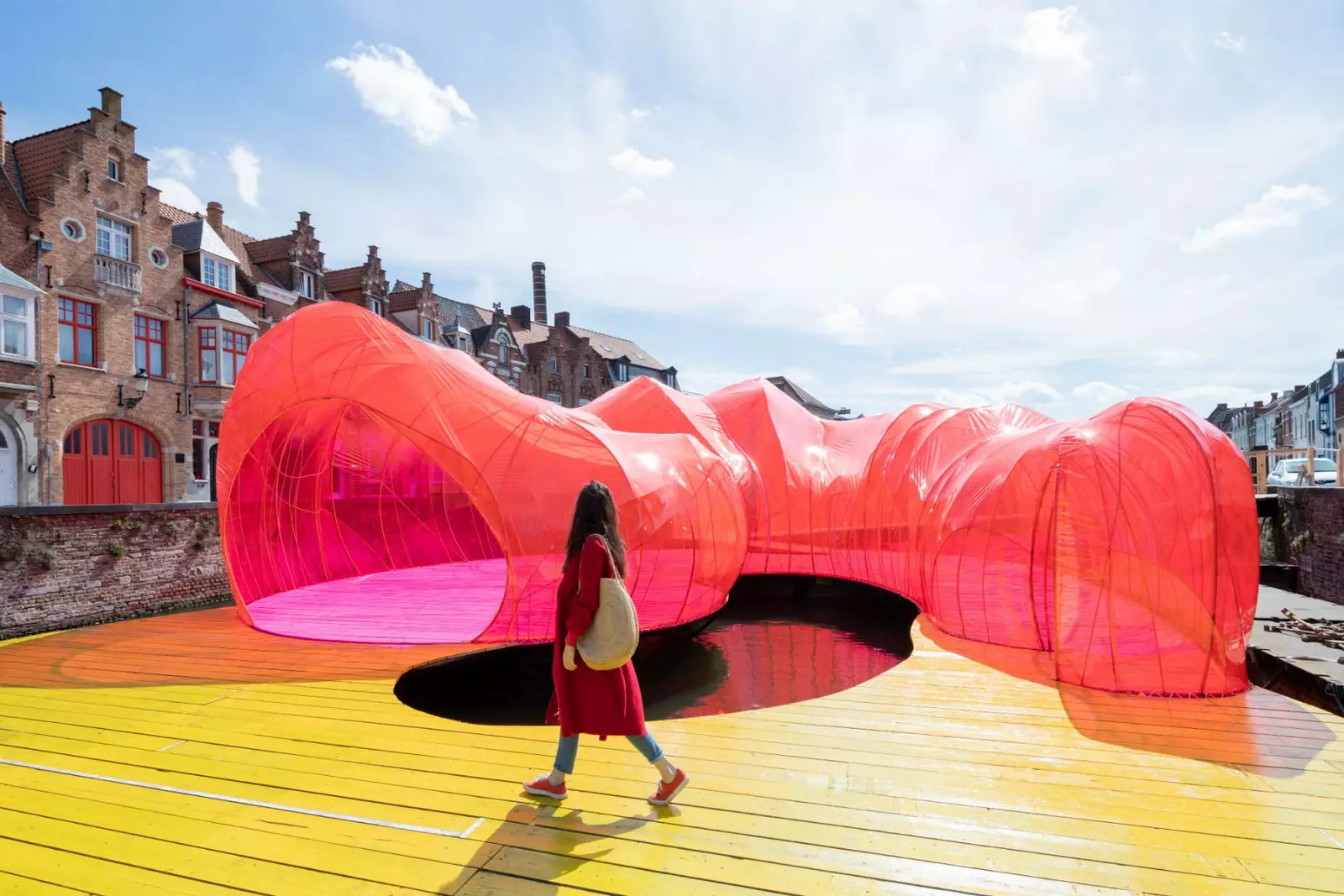
Floating pavilion by the Spanish studio SelgasCano, a tropical explosion over the calm Coupure channel.
Three years ago, this medieval whim surprised the world with an unexpected dose of modernity, turning all its corners into a great art Gallery and future.
From today until next September 16, Bruges celebrates a second edition of the much more popular, intelligible and less pretentious Triennale Brugge in which there is an underlying objective: to make summer an ephemeral festival and, also, a cultural one.
Or what is the same, offer a very different way of enjoying its narrow streets, docks and monuments to return to a destination that, thanks to this initiative, is much more inexhaustible and unpredictable. As indicated by its mayor, Renaat Landuyt: "whoever comes to witches to see the past is going to meet the future”.
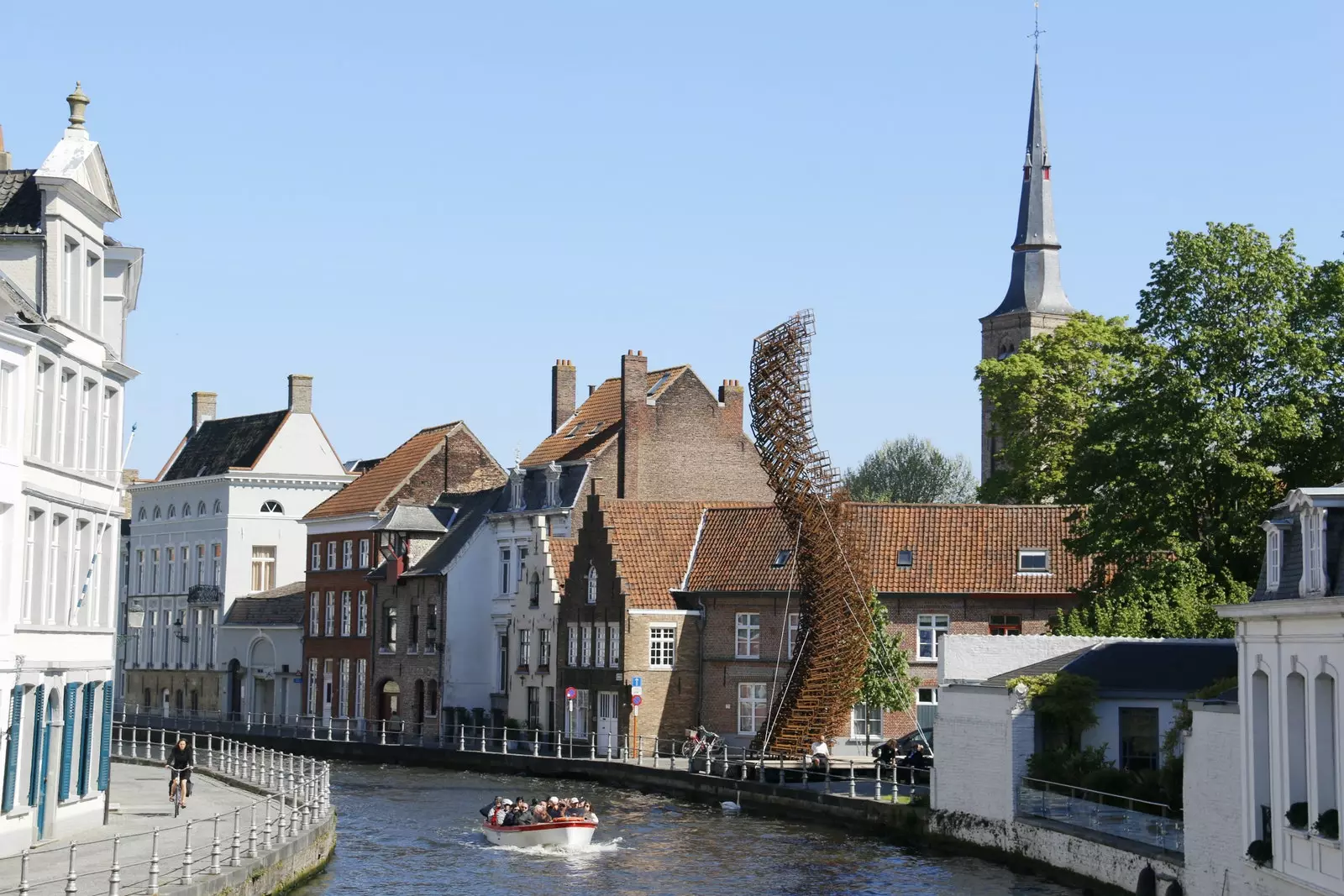
John Powers has made a swan neck inspired by the most representative animal of Bruges with small pieces of steel.
LIQUID AND ECOLOGICAL
Behind the 15 interventions that dot its alleys, buildings and canals, there is an intention: to reflect on the cities to come and on the role that its inhabitants will have in all its transformations.
That's why Its main theme is liquid cities, those that are constantly change and whose name was created in the 1980s by the Polish-British philosopher Zygmunt Baumann to refer to postmodern restlessness.
This translates into pavilions, works of art, large sculptures and exhibition spaces that can be divided into three sub-genres. The first is the one that encompasses the creations that seek to change the pace of the residents and travelers of Bruges offering them a different way to enjoy their heritage. The second, the one that makes art reflections and theories about the future of civilizations. And the third, the one that directly involves the people of Bruges in the creation and intervention of spaces to their liking.
But, beyond the critical classification, the interesting thing is that these ephemeral actions modify the perception of the city and they do it by being part of their routines and defending ecology. And as support, some explanatory boards that, in English, simply describe the idea of each artist so that the caption of Instagram may have some substance and a hashtag: #tribru2018 . It only remains to enjoy them.
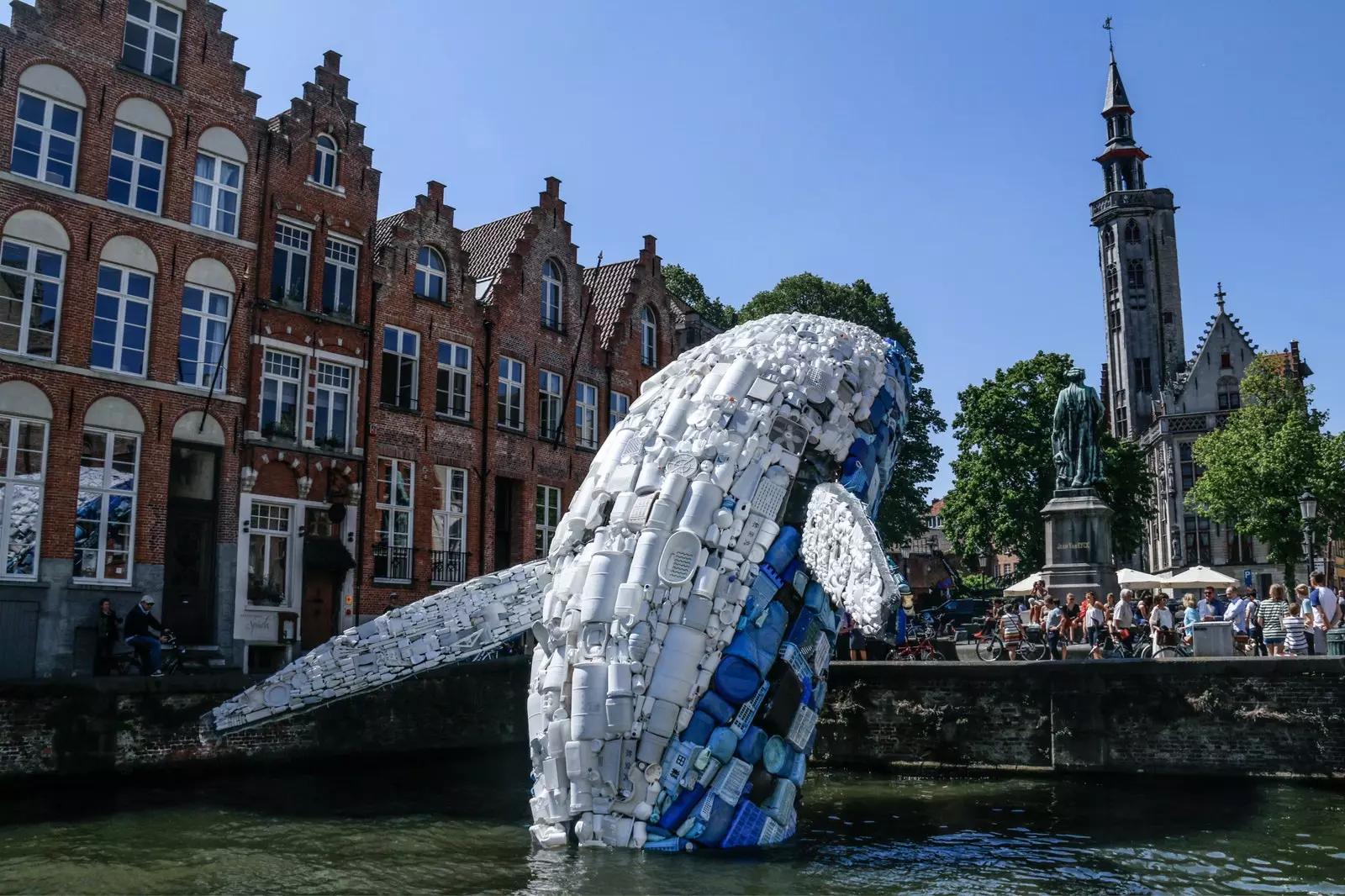
StudioKCA has installed a giant whale in the canal made from plastic found in the sea.
THE SUMMER ROUTE
For pedestrian purposes, this contemporary art festival proposes a transgressive journey through the classics of Bruges that have been intervened in various ways.
Without going any further, in front of the Van Eyck statue on the Spiegelrei canal, the Americans StudioKCA have erected a huge blue whale nine meters high built with the residual plastic material found in the sea. Its name, 'Skyscraper', is ironic while its message is overwhelming, especially if you look at the data that its creators throw, among which is the fact that there are more tons of plastic waste in the sea than raw tons of cetaceans in total.
Another essential is the floating pavilion of SelgasCano, the Spanish architecture studio that has best managed to rhyme innovation with ecological and aesthetic awareness. A harmonious ménage à trois highlighted here with tropical colors with those who make their installation – on the calm Coupure canal – a platform for bathing.
For Lucía Cano and José Selgas, the main motivation for this project was the possibility of make a floating space and be able to experiment. Their material, an unprecedented PVC, allows them to create unexpected shapes and, at the same time, warm up the laziest swimmers before diving into the water.
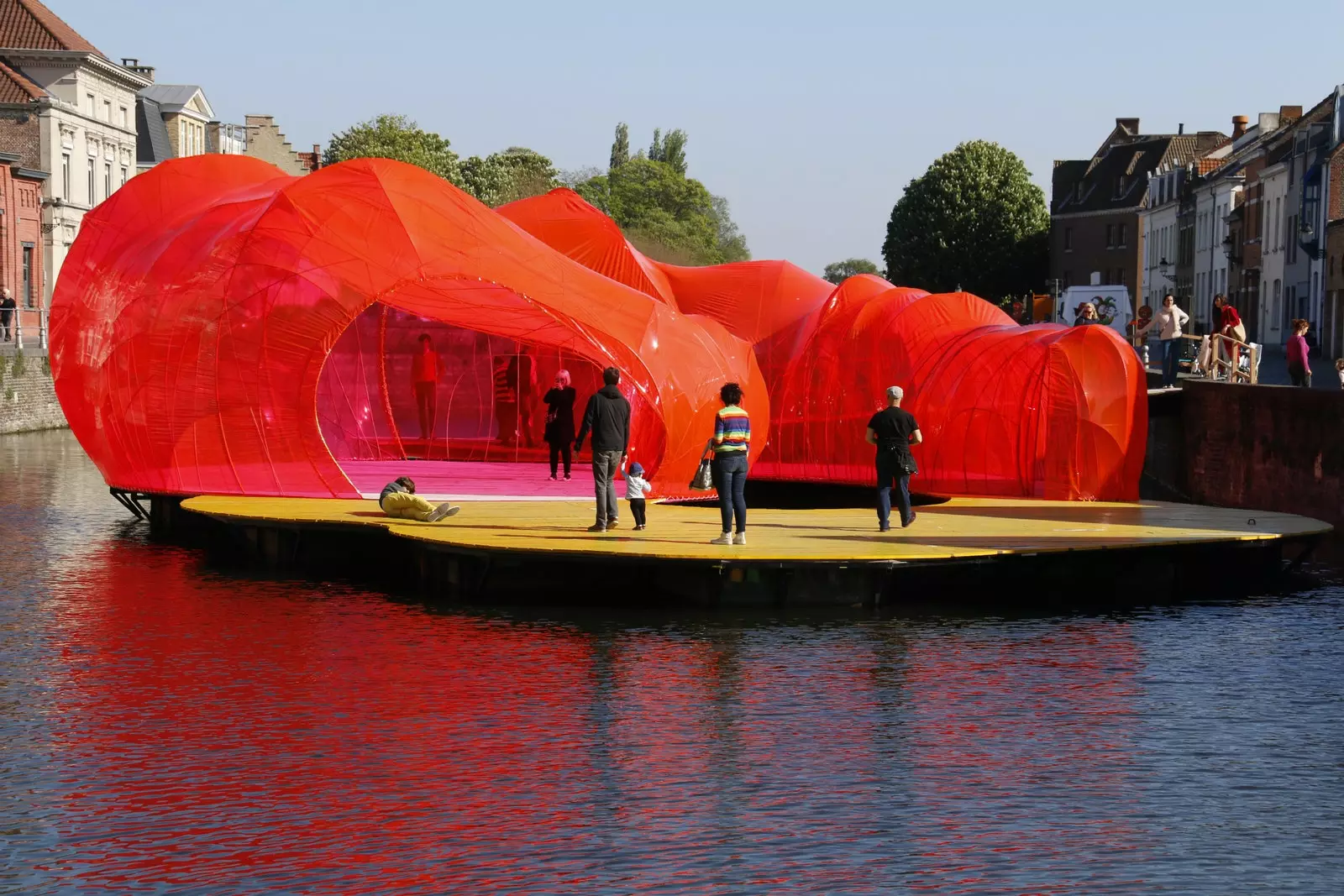
SelgasCano has devised a bathroom platform with unexpected shapes.
For its part, the Korean studio OBBA has created a walkway in the Langerei along which you can walk on water and be able to enjoy this corner of Bruges from a point of view previously unknown to non-aquatic beings. A wooden passageway crowned by cotton ropes that weave swings, armchairs and curtains that move in the wind and improvise a river beach club.
Precisely this interaction with the public is what its creators were looking for. So Jung Lee herself, the designer of this piece, points out that what surprised her the most about Bruges when she visited it for the first time was how little the monuments interacted with their restless inhabitants, hence she has created the perfect place to toast in the warmer months.
A less practical and more artistic effect is the one achieved by Jarosław Kozakiewicz with his bridge over the Gronerei, which, basically, are two faces of fun geometries that kiss in the center.
This route more intimately connected with the city has another stop at the great John Powers gooseneck, made with small pieces of Corten steel that is inspired by the quintessential animal of this idyllic town; also in the entrance to the underworld called 'Ancheron' that Renato Rinoldi sculpts in the Langerei and that turns the waters of this calm canal into the curtain of a Dantesque universe.
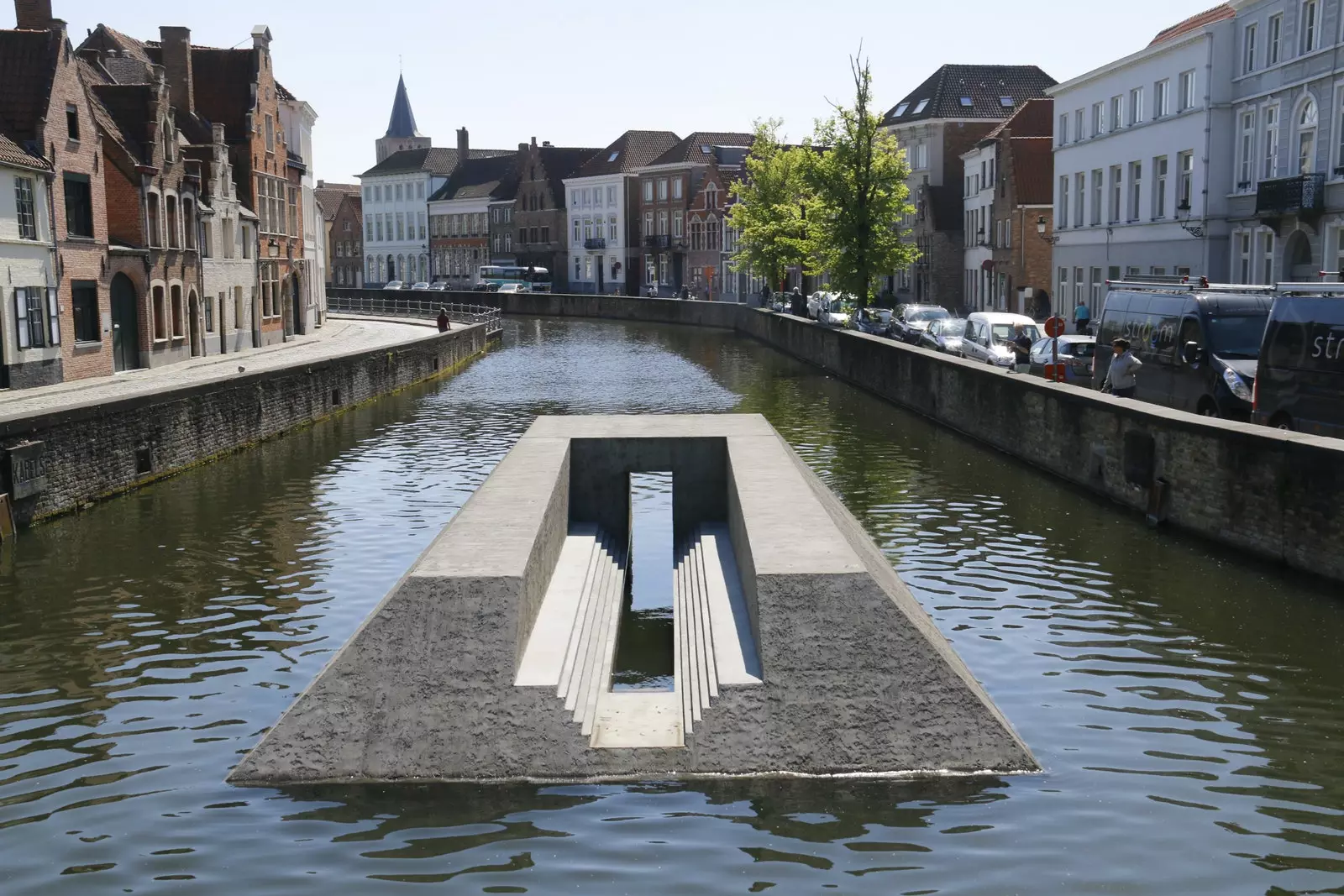
Renato Rinoldi sculpts in the Langerei an entrance to the underworld called 'Ancheron'.
URBAN UTOPIES
Beyond the surprising photo or the unexpected Bruges, the works of the triennial also seek to give solutions and theories about the future of cities in an attractive way.
In one of the most spectacular enclaves in the entire center, the San Juan hospital, Peter Van Driessche raises his great wooden towers and drawers as a proposal for the cities of a future in which the sea gains ground from the sea. Sites that are modular like a chest of drawers, interchangeable and that withstand the tides in order to survive any flood.
For your part Kunlé Adeyemi ( NLÉ ) has evolved its famous floating school to create an indestructible space that provides educational solutions to many corners of the planet. Its placement in the famous lake of love This is misleading because, although it looks like a flimsy drifting structure, this unsinkable wooden school is designed to overcome any climatological adversity, while at the same time inspiring and providing ecological and sustainable solutions to a problem, that of education, that is becoming more and more worrying but less alarmist.
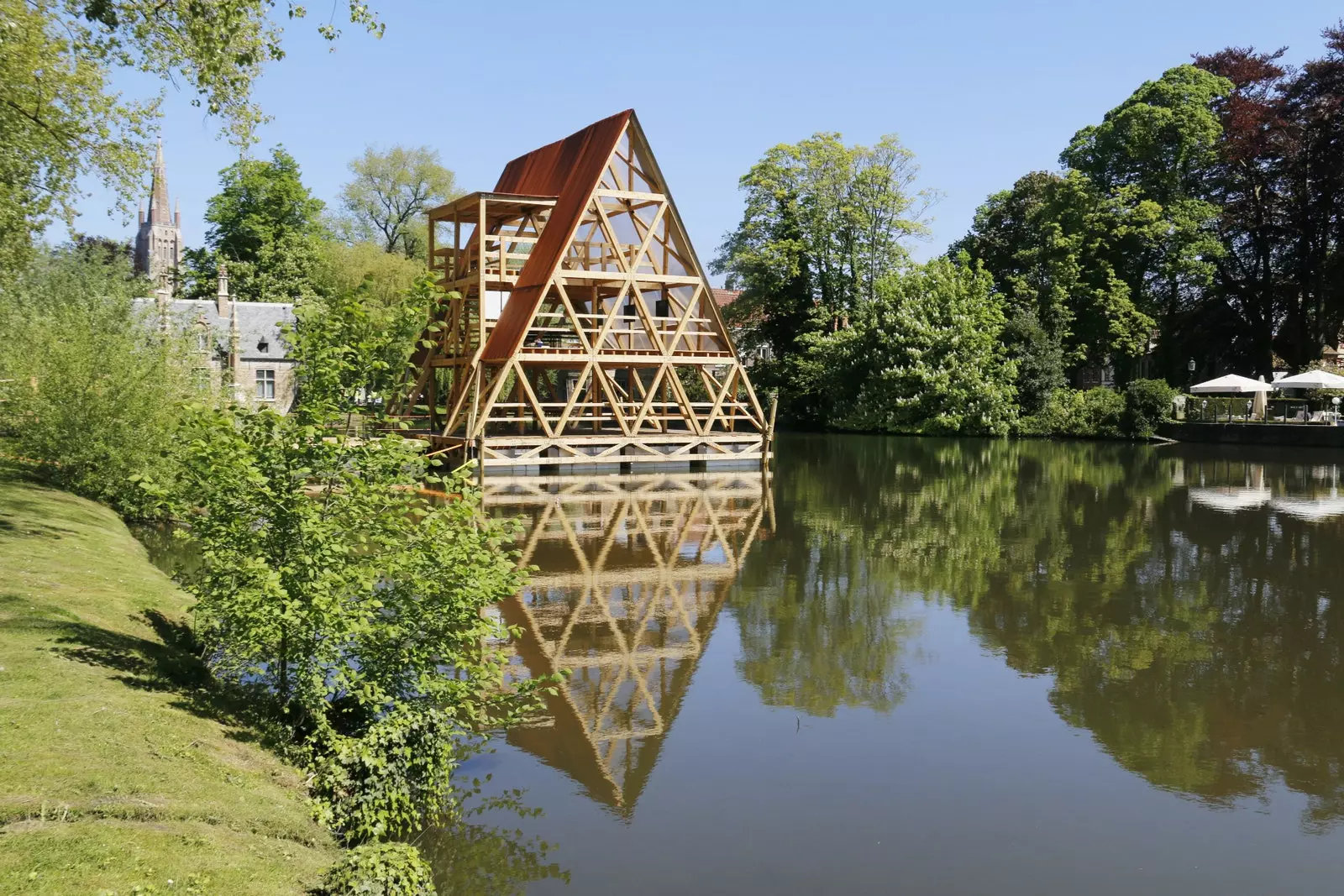
Don't be fooled by its looks, this NLÉ floating school is unsinkable.
in the very burg square , the architect Wesley Morris proposes a pavilion of communicated modules in which the trending topics of the urban future are highlighted. Not far away, in the pootersloge, The aerial cities that the mediatic Tomás Saraceno imagines in the future are exhibited on video.
And in terms of art, the FRAC (those wonderful regional contemporary art initiatives in France) in the Loire Valley brings to the church of the Grootseminarie different works that speak of the movement, citizen participation and technology, the three pillars that, according to its director, Abdelkader Damani, are the basis of the future of cities. And they do it in a spectacular space where religious iconography collides with creaky (by color and by concept) creations.
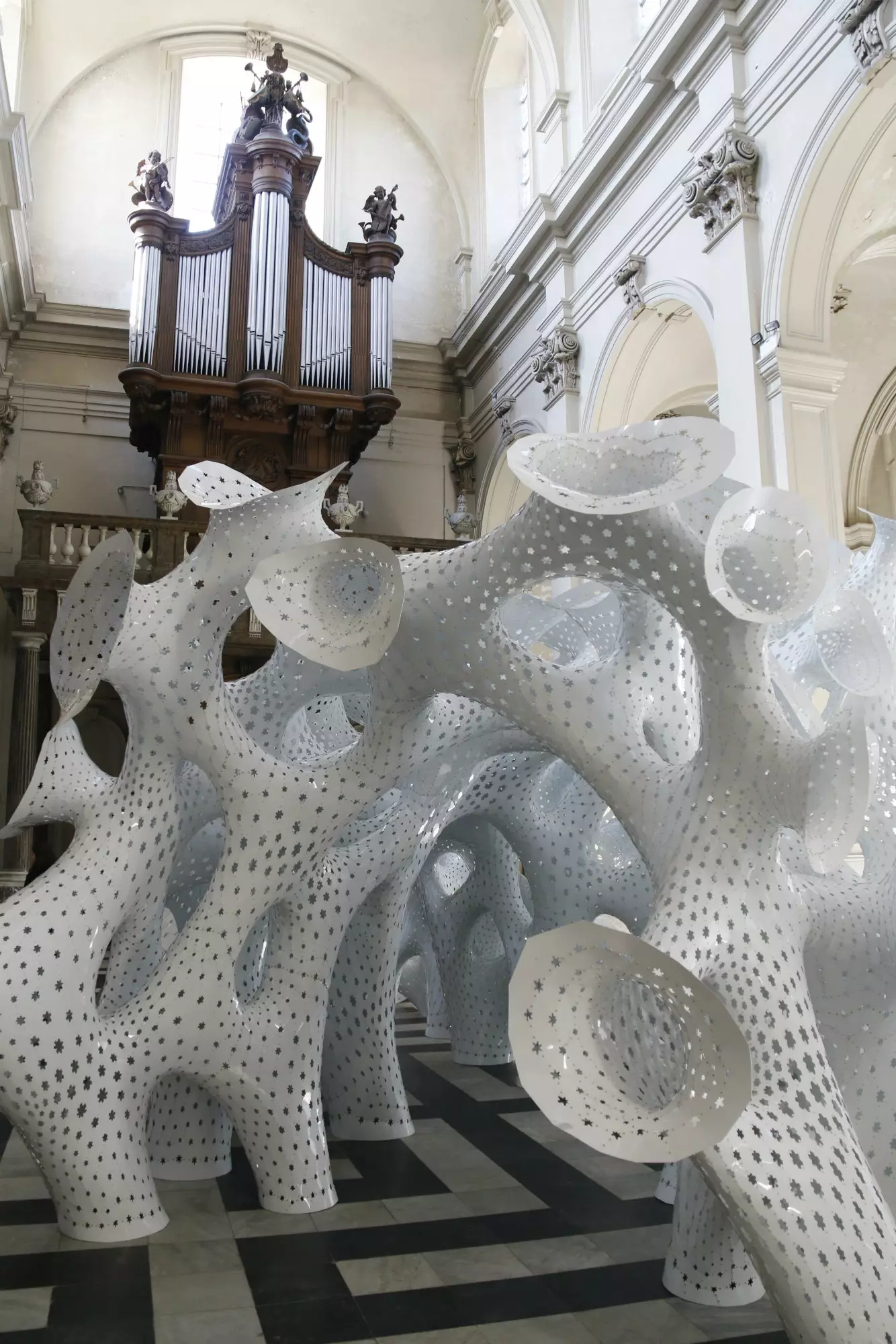
Religious iconography vs colorful conceptual creations in the church of the Grootseminarie.
CITIZENS OR ARTISTS?
Two projects actively involve Bruges. And in a radically different way. In the heart of the city, the Saint Trudon Abbey hospice for the elderly and sick continues to welcome evicted Belgians in an atmosphere of silence. Here, the Ruimteveldwerk collective has worked with them on the project G.O.D. to make the space more welcoming, create a garden to feel proud of (and to feel useful with) and travel to the past with a small archaeological excavation in search of the origins of these curious lay relief communities.
Young people are the protagonists of the Raumlabor project in the northern reaches of Bruges. Since the fall of last year, this group of architects has been working hand in hand, nail by nail, with the city's teenagers in a workshop whose The objective is very simple: to turn a vacant lot into a leisure park for them.
The result is a fun place where its tree house, its romantic corner overlooking the river and its optimistic giant Jacuzzi that starts up every other Saturday are surprising.
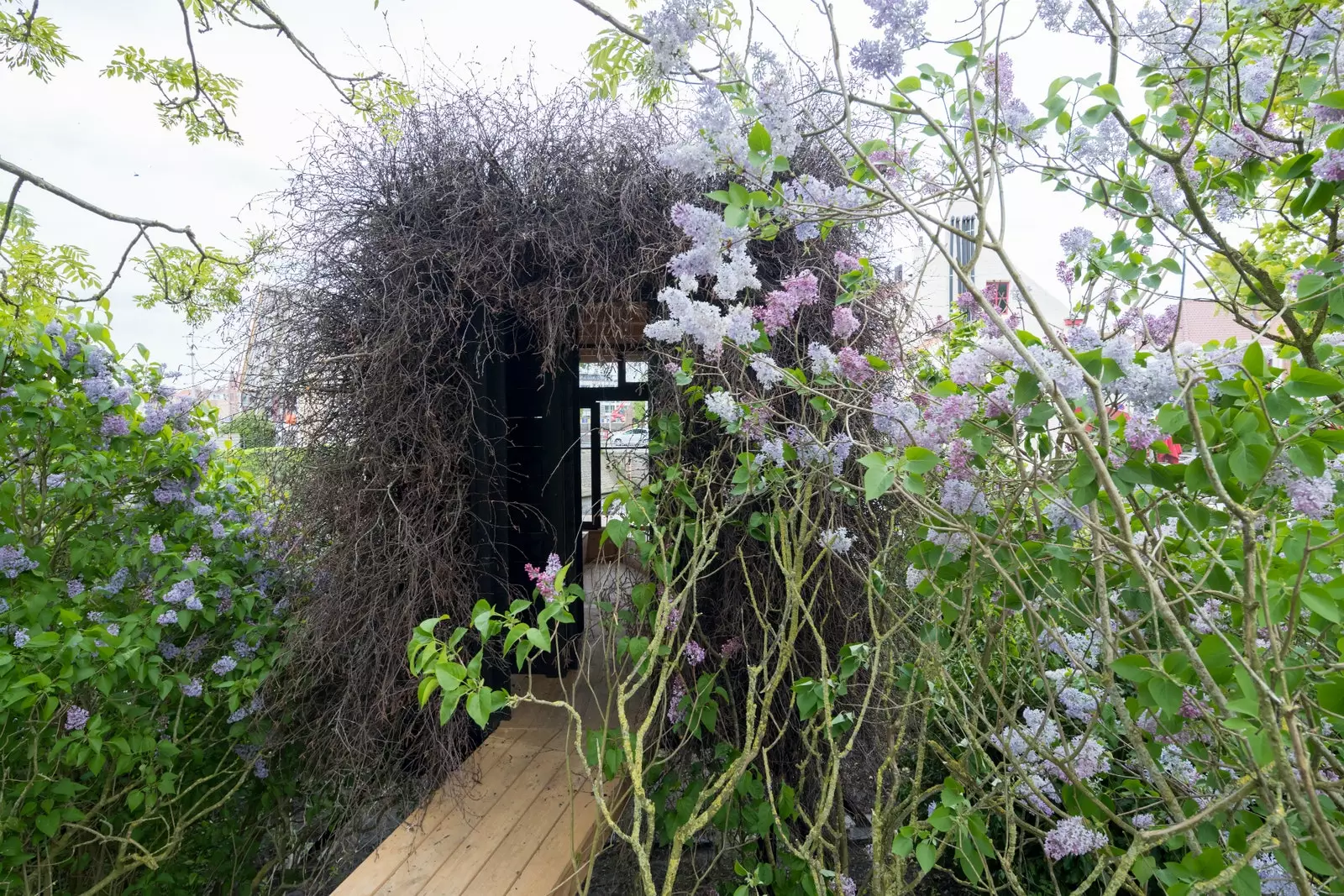
The group of architects Raumlabor has turned a vacant lot into a leisure park for (and with) the young people of Bruges.
THE BEACH MADE A MUSEUM
Before this idea arose in Bruges, the Flemish coast was already investigating the meaning of sculpture and public art in the 21st century. The Beaufort initiative has been programming since 2003, also every three years, a set of artistic interventions next to the wild beaches of this coastline that reflect on what monuments are today and what they are for.
In this edition, the curator Heidi Ballet has selected 18 artists from all over the world to exhibit on this unique stage her vision of current problems in the form of a monument and, in this way, give meaning to its existence and predominance. Hence, going to the coast and getting off at each stop of its coastal tram is a curious way of turn the promenades into art galleries to the sound of the sea and the waves.
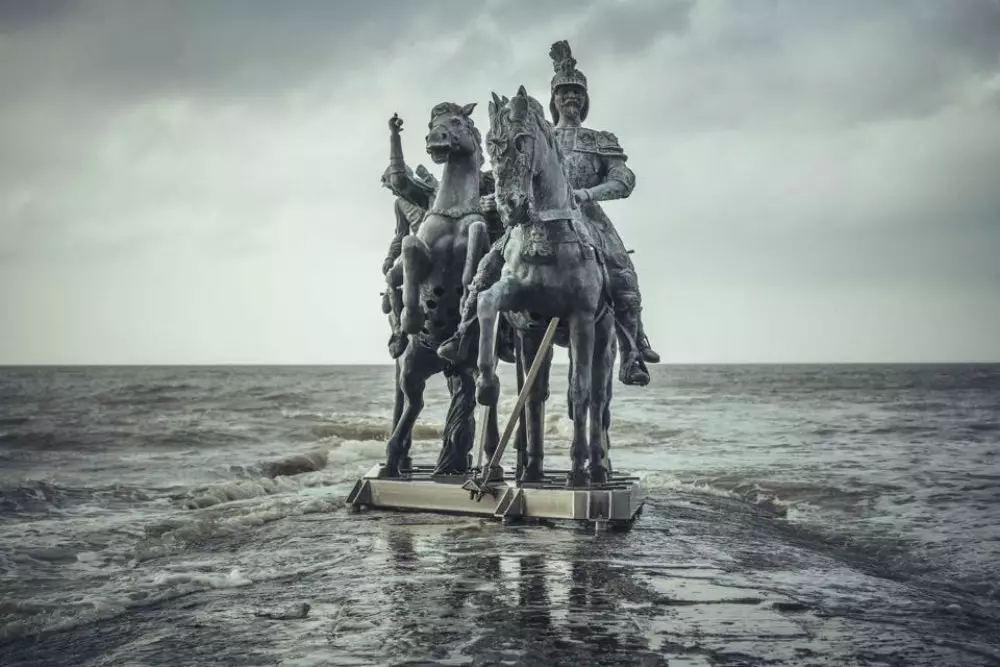
Within the Beaufort 2018 initiative we find works as disturbing as 'Men', by Nina Beiers.
